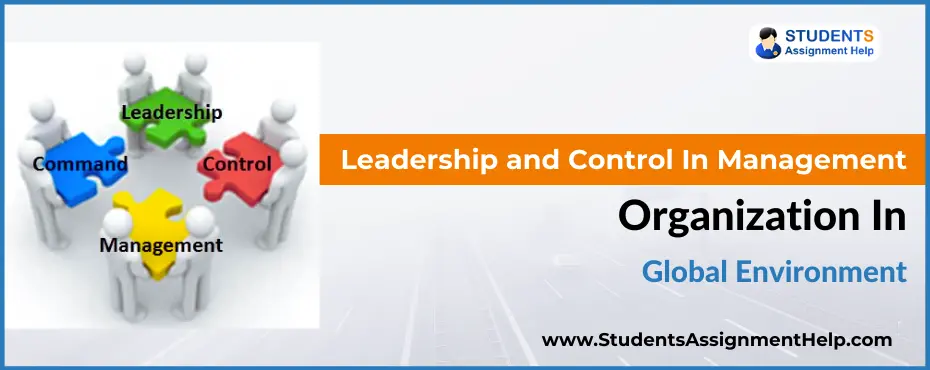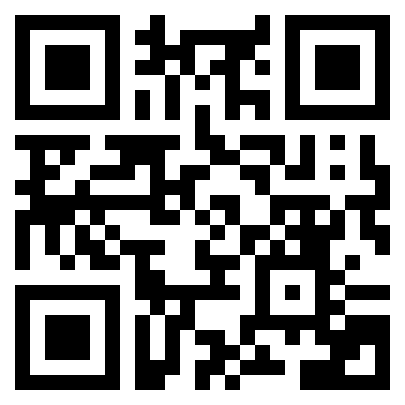Leadership and Control In Management Of Organization In A Global Environment

LEADERSHIP
Leadership is a critical management skill tough to define. It is the ability to motivate people to accomplish a common task. It enables a person to achieve the goals and direct the company towards rationality, consistency, and success. Leaders leverage their traits such as skills, values, and experience, to carry out the processes. There are many theories on leadership that provide significant and applicable consultation on becoming an effective leader.
An effective leader is the one in whom his followers have belief and confidence, which indicates employee satisfaction, and who maintains effective communication with the employees for the benefit of the business and individuals both (Hersey 2001). Before the course was taken, the idea of leadership remained an unexplainable phenomenon. Prior to learning, the student knew that it was known to exist, and it has a tremendous influence on performance, but the specific dimensions and the method of working remained a question for the learner.
Flexible Rates Compatible With Everyone’s Budget
Hire a Professional Essay & Assignment Writer for completing your Academic Assessments
After taking the program, it is known that many researchers have conducted research to know what makes an effective leader. These researches have resulted in various theories and models of leadership that can be categorized into four leadership theories: Trait theories, Behavioral theories, Situational and contingency theories, and emerging theories of leadership (Charismatic Leadership, Transformation leadership, and Social learning and substitutes leadership).
The weaknesses of one theory gave way to other more realistic theories, in turn. Charismatic theory, which was discarded long back by the researchers, has started attracting attention recently (Steves 2010). It is learned during the program that each of the theories has its own framework, contributions, assumptions, limitations, and analysis. Prior to learning the theory of leadership, the questions that seem to bother the learner regarding the phenomenon and principles of leadership were how important effective leadership is what skills are required to develop it.
However, today’s dynamic business environment and the need to adapt to ongoing changes in the business require open and honest communication between staff and senior management. In the modern era, there is a need for ongoing development of leadership practices (Mumford et al 2000). The leadership approach that is desired for modern companies in the global competitive environment is the development of a collaborative and effective leadership team at the top level.
The rapidly changing business environment of today’s global world demands that the leadership and powers must be given to the team formed at the top rather than making a single, powerful CEO (Steeves 2010). The next generation leaders believe in uniting the company into an effective team working in a holistic manner. Shared leadership approach is what the next generation leaders want.
Modern companies have now focused on the creation of a conducive environment and procurement of available resources (Hamilton 2007).In today’s global business environment, cutthroat competition exists in the market. Companies have started taking people as a major source of competitive advantage because human resource management has moved from personnel management to strategic human resource management. So large amount is spent for training and development programs of the employees.
Stuck with a lot of homework assignments and feeling stressed ?
Take professional academic assistance & Get 100% Plagiarism free papers
Companies have to ensure that their employees are loyal so that there are few turnovers. Those companies following this aspect are at the cutting edge because the employees are very loyal to these companies (Hamilton 2007). Adopting the democratic style of leadership inclines employees to become committed towards the desired outcome because they have a say in the decision-making process. There are more thorough solutions to the problems, which make the business, stand apart.
Collaborative problem solving ensures better results in comparison to unidirectional authoritative style of making decisions. However, this does not work when the workforce is inexperienced. In addition, it is time-consuming, and if there is some urgent need, then the leader has to switch to another style, because competitive global environment demands quick decisions and solutions to the problems. (Hamilton 2007)
The leadership styles that could be most effective in modern organizations can be transactional leadership, empowering leadership, visionary leadership, participative leadership, and delegate leadership. Methods and skills needed for today’s leaders are human relation skills and a caring approach. It can be determined that there is no best leadership style and approach. But the need of the hour is to practice leadership styles according to what the situation demands.
Management experts agree that there is no best effective leadership style Every leadership style has its own significance and can prove to be effective in right situations. The style becomes the best when it rightly matches the situation. Best leadership style depends upon the level of interaction with the employees, personality of the manager and the work environment. (Pride et al 2011)
CONTROL
Management control is an important aspect of organizational processes and policies. Henry Fayol gave one of the definitions for control in 1916 by relating to activities of management. According to Fayol, control comprises of the action of verifying whether every organizational activity and process is occurring in conformity with the plan adopted, instructions the management issued and principles lay. The objective of control is to find out weaknesses and errors so as to rectify them in a timely manner and prevent their recurrence (Wood and Wood 2002).
Prior to taking the course, the learner only considered control as a formal process required to be done in order to keep the performance in line with the set standards. However, the program provides significant insights on the role of control and its relationship to other primary activities of the management, which are planning, staffing, and coordinating.
After the program, it is understood that control is a systematic effort for the business management that helps in providing a thorough overview of what went wrong in any project, and it also helps in identifying the gaps in current and desired performance. It also provides assistance to managers for any remedial actions required to take for the overall effectiveness of organizational work and for ensuring that human resources, as well as other corporate resources, are used in the most effective as well as efficient manner so as to accomplish corporate objectives (Morden 2004).
In last decades, the level of international competition has risen to a significant level, and it is becoming increasingly critical factor in various industries. Managers working in the new global competitive environment and demands require relevant information regarding cost and performance of the activities, products, processes, customers and services of the business. Globalization has paved the way for an increase in the competitive pressure on firms.
It necessitates companies to become flexible so as to respond to the competitive and market changes in a quick manner. The role of manager is paramount because he/she has to take crucial decisions and relevant actions so as to contribute to the target of bringing improvement in the value of the shareholder. Control improves the chance of the company to achieve higher levels of success in business.
Among all management functions identified by the Henry Fayol, control is an important function. Management control is the linkage between strategic planning and operational control. Effective and efficient resource utilization of resources is the outcome of good management control. Controllers have a joint responsibility with the management to accomplish organizational objectives (Papp and Pajrok 2010).
The Role of controllers is significant in terms of following actions that take in the company-
a.) Controllers ensure transparency of business processes, finance, results and strategy that contributes to attain economic effectiveness at higher level.
b.) Controllers coordinate with the management in a holistic manner for sub-targets and related plans. They organize a reporting system that is oriented towards the future and it covers the business as a whole.
c.) Controllers perform certain activities in the controlling process, such as moderation and designing for the purpose of defining planning, goals and controlling, so that every decision maker in the company can act in accordance to the agreed objectives.
d.) Controllers have the responsibility of providing managers with relevant information to develop their insights on controlling (Papp and Pajrok 2010).
Significant learning has been attained on completing the management program. With the help of the course, the learner has learned about the crucial information sources of controlling. The information sources of controlling include internal as well as external sources of controlling. The internal source includes accounting data. The management of a company requires detailed information when compared to the information that traditional sources of data, such as financial accounting provide. The reason for such large amount of information is the underlying focus of the management on the future situation and working of the company rather than the past (Papp and Pajrok 2010).
Traditionally, the model of control by compliance was followed for traditional bureaucratic organizations. With the advent of internet and businesses becoming more and more and more global and virtual, the model of control by compliance has become non-significant for companies working in the new world of business. Such companies face challenges of loose coupling, ambiguity, and uncertainty.
Under such conditions of new business environment, the measurement of the performance of the worker with input of precision and reliability is not possible. If traditional model of control is implemented, it will systematically reward in a narrow range of maladaptive behavior, thus ultimately leading to the decline of the company. In present business scenario, self-control has started taking place of traditional form of control identified by Fayol.
New models of knowledge related organizational controls are required. It can prove to be conducive to the attainment of sustainable competitive advantage in the current business situation of unpredictable and radical change. Upon the end of the program, it is learned that the concept of control has evolved from simple compliance of pre-set rules and standards to use of intuition for facilitation of detection and control of errors.
Instead of controllers emphasizing on following and adopting best practices, the newly evolved model of control encourages another form of control. It emphasizes on the development of a large pool of responses for suggesting not only varying kinds of alternative suggestions, but also different types of approaches for the purpose of executing those identified solutions (Malhotra 2000). In traditional organizations, utilization of knowledge is antecedent with external control as the consequent.
The environment is usually stable with presence of incremental change. A single loop of learning is present, and managers adopt the static view of knowledge- rules, policies and procedures. The knowledge pool resides with the management. On the other hand, emergent organizations in dynamic global business environment have self-control as the antecedent and creation of knowledge as the consequent. The environment is flexible with presence of increasing pace of continual change. Double loop of learning is present with self adaptation as the philosophy of control. The distribution of knowledge is more equitable in comparison to that of traditional businesses (Malhotra 2000).
References
Hamilton, C. 2007. Communicating for Results: A Guide for Business and the Professions. 8 th Ed. Mason: Cengage Learning.
Hersey, Paul. 2001. Management of Organizational Behavior. 8 th Ed. New Jersey: Prentice Hall.
Malhotra, Y. 2000. Knowledge Management and Virtual Organizations. New Delhi: Idea Group Inc (IGI).
Morden, T. 2004. Principles of Management. Canada: Ashgate.
Mumford, M. D., Marks, M. A., Connelly, M. S., Zaccaro, S. J., and Reiter-Palmon, R. 2000.
Development of leadership skills: Experience and timing. Leadership Quarterly. Special Issue: Leadership skills, 11(1), 87-114.
Papp, L. and Pajrok, A. 2010. The Role of Controlling And Its Admission Within Sms Enterprises In Hungary – Especially in The Hospitality Industry. Annales Universitatis Apulensis Series Oeconomica, 12(1).
Pride, W.M., Hughes, R.J. and Kapoor, J.R. 2011. Business. 11 th Ed. Mason: Cengage Learning.
Steves, R. 2010. Breaking the Leadership Mold: An Executive’s Guide to Achieving Organizational Excellence. Canada: John Wiley and Sons.
Wood, J. C. and Wood, M.C. 2002. Henri Fayol: Critical Evaluations in Business and Management. New York: Taylor & Francis.






